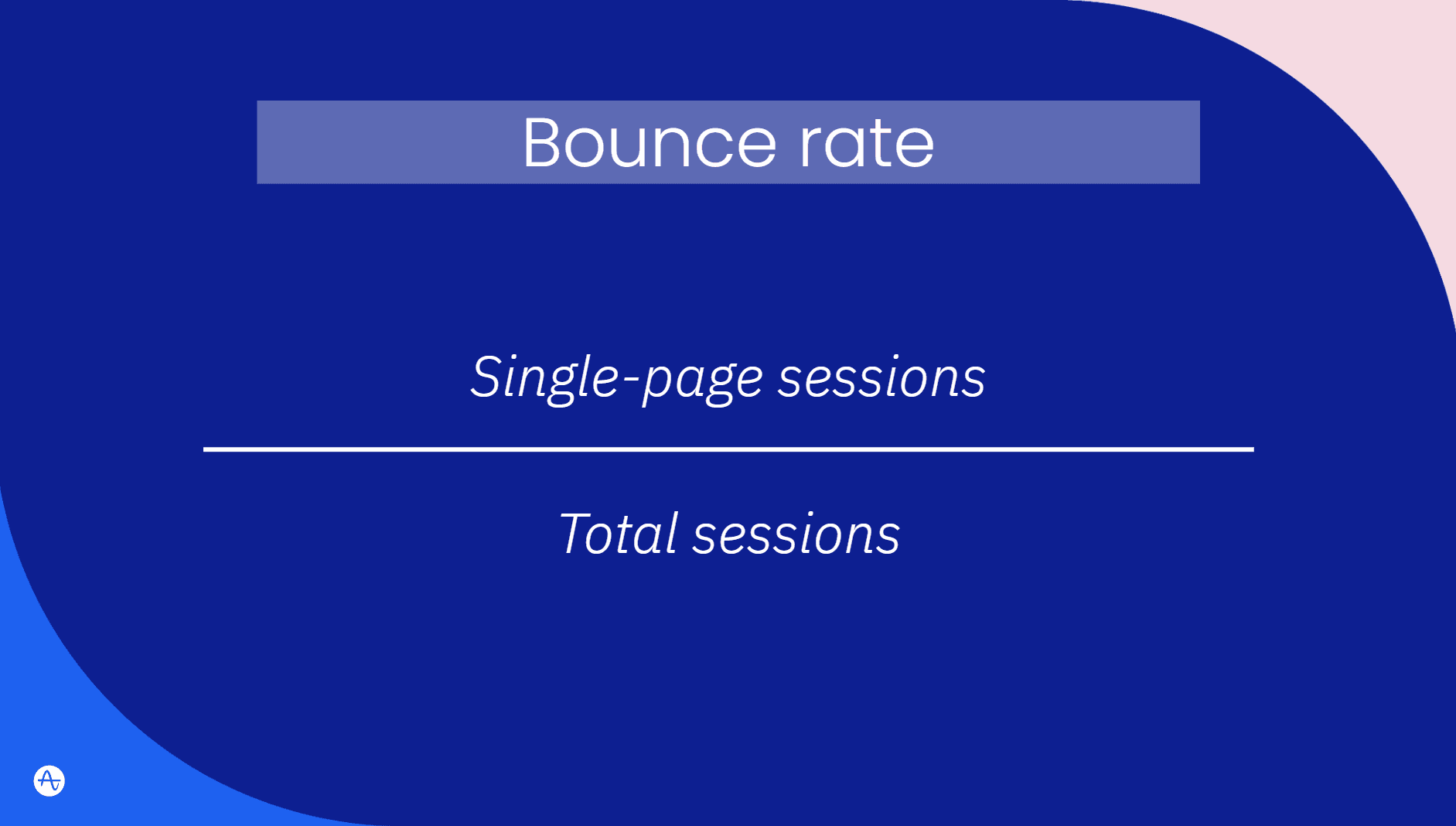Bounce Rate: How to Calculate & What's a Good Average
Learn all about an important website metric: bounce rates. What is a bounce rate? What's a good average bounce rate? How might you improve yours? Learn more here!
Originally published on September 20, 2023
Browse by category
Many marketing metrics are straightforward.
For example, if you’re reporting on monthly organic sessions for your website’s blog, then high beats low. But if you’re measuring the number of subscribers opting out of your weekly newsletter? The opposite is true—the lower, the better. In both cases, the analysis is cut and dry.
Bounce rate is an important website metric, but it also requires a bit of interpretation.
Read on to learn about bounce rates: how to calculate, how your website’s rate stacks up, and why a high bounce rate is sometimes a good thing.
Key takeaways
- Visitors bounce from your page when they back-click, close their tab, click an outbound link, or take a similar action without visiting a second page on your site.
- Typical bounce rates vary depending on page type and industry.
- There’s no universal benchmark for bounce rate—your page’s context is the most important factor for analysis.
What is bounce rate?
A website’s bounce rate is the percentage of visitors leaving or bouncing after accessing just one page.
A bounce occurs when a visitor hits back, closes a tab, clicks an external link, or takes any other action to leave a page instead of continuing and visiting multiple pages on your site.
Bounce rate is an essential metric for assessing the overall effectiveness of your webpage.
A high bounce rate might indicate a user experience issue with your page, like slow load speed or unintuitive design. Your page’s content can also impact bounce rate—high-value content that addresses your visitors’ search intent will keep them on your page. But a high bounce rate isn’t always a bad thing. For example, if you publish an educational blog post that effectively answers your visitor’s question, they might not need to view any other pages on the site. A high bounce rate for this type of page means it’s achieving its goal of educating visitors on their topic of interest, while simultaneously showcasing your business’ credibility on the topic.
Conversely, a high bounce rate on a product page on your ecommerce store prior to checkout likely signals a problem.
How to calculate bounce rate
To calculate your bounce rate, divide the number of single-page sessions by the total number of sessions over a given period.
Bounce rate = single-page sessions/total sessions

A simple bounce rate formula graphic
Let’s say you run a technology blog covering trends in the cloud software industry. Last month, your website registered 10,000 single-page sessions out of 100,000 total sessions. In this case, your bounce rate is 10 percent.
Marketers and site owners interested in bounce rates can use digital analytics tools like Amplitude to measure bounce rates.
Bounce rate versus exit rate
People often use bounce and exit rate interchangeably, but they’re actually distinct metrics.
Bounce rate measures the number of visitors bouncing after viewing just one page.
Exit rate, however, measures the number of visitors leaving a web page after visiting at least one other page on a site.
Bounce and exit rates mean different things for different pages.
For example, if a typical user's journey to your website tends to end abruptly after visiting one specific page, the exit rate of that page will be higher. Auditing that page would be worthwhile to understand the root cause of your high exit rate and ensure it’s not driving visitors away.
What is a good average bounce rate?
Average bounce rates vary depending on page type, industry, and other factors.
Data from customedialabs puts the average bounce rate for ecommerce and retail websites between 20 and 45 percent. Blogs and dictionaries, on the other hand, can expect typical bounce rates ranging from 65 to 90 percent. Business-to-business (B2B) websites have average bounce rates between 25 and 55 percent.
Blogs and dictionaries have higher bounce rates because visitors tend to leave after finding a satisfactory answer to their questions. Ecommerce stores, which have lower average bounce rates, typically drive visitors toward some kind of action, like subscribing to an email list or making a purchase. So, viewing these averages without context is an apples-to-oranges comparison.
Industry is another factor, according to CXL data. Food and restaurant-related websites experience some of the highest bounce rates across industry groups, while real estate and shopping are on the low end.
The takeaway? It’s impossible to assess your website’s bounce rate without considering content and industry-level context.
How to reduce your bounce rate
Reducing your bounce rate is often a matter of delivering a more valuable experience to your readers. To lower the bounce rate of your website or a specific page, consider the following:
Increase site speed
Users expect pages to load quickly, and testing their patience makes them more likely to bounce. According to Google, bounce probability jumps 32% between pages taking one second to load vs. three seconds.
You can get your bounce rate in check by evaluating metrics for your mobile and web page experiences. If a page takes forever to load, a slow-loading hero image or poorly rendered piece of code could be the culprit.
Meet visitor intent
Is the content on your page high quality and valuable to your visitors? If not, they’re much likelier to bounce.
If users click on your blog expecting to learn about a given topic, follow through on that. Meeting visitor expectations is important whether they reach your page via organic search, display ads, or email campaigns.
Improve user experience (UX)
You can have the greatest content on the fastest-loading page, but droves of visitors will bounce if your user experience is distracting or unpleasant.
Audit the UX of pages with high bounce rates to see where they fail.
For example, a news website with annoying spammy popup ads will likely drive readers to a competing source. The same goes for a marketing website that serves a huge modal prompting visitors to enter their email address the moment they begin reading. Instead, consider serving an email subscription prompt further down in their scroll experience to prevent visitors from hitting “back” immediately.
Bounce rate reflects page value
Understanding your bounce rate can help you determine whether your content is helpful to visitors. Providing a valuable webpage experience will yield varied bounce rates—so remember there’s no one-size-fits-all benchmark. The most important thing? To improve your overall page experience.
Ready to track and improve bounce rate and other essential website metrics? Learn more about the metrics that matter most here.

Katie Geer
Former Growth Marketing Manager, Amplitude
Katie is a former growth marketing and product manager at Amplitude focused on acquisition. Previously she was in product at Redfin where she focused on experimentation and data instrumentation.
More from Katie




